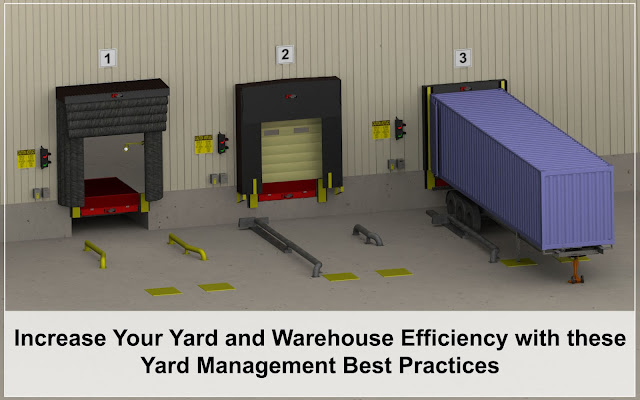This is a best practice that will be very useful if you have a lot of trucks, trailers, and containers coming into your facility. This is called yard management, so basically this is a small system within the WMS with which you can track your truck’s trailers and containers. You can create yard locations and of course you can create dock doors and you can track them exactly. But it’s all about visibility right, I mean I want to know where my product is, I want to know where my trailer is, I want to know in what area of the yard that these trailers are sitting so that I can track them better. I can have visibility to where it is and what is inside the trailer shipment and all that.
In order to make this work really well, you will have to have a shipment. The multiple steps that are typically done in a yard management system is there is a driver that’s bringing the product in a shipment and he will call ahead to drop them off and to get an appointment. So there have been an appointment scheduled against that ASN shipment that’s being brought by this driver and then once the appointment is scheduled the driver shows up at that time or a little early. He shows up and then there is a guard which is the entry point into the yard area.
The guard does the dock check-in and this is all systematically done in the system. Because if you write it on paper nobody knows what happens to the paper. If there is a dock door available then the dock door is assigned. When the driver shows up the guard checks in against that shipment and then if a dock door is available he gets sent to the dock door right away or if the dock door is not available let’s say all the dock doors are full then he gets sent to the yard location. So yard locations are extra locations at which when the dock door is not available you still want to keep the trailer at a place closest to the dock door and also you want to have some visibility.
You can find where the trailer or container or truck whatever it is sitting and also there are yard jockeys that can haul these containers from the yard location to the dock door and then finish unloading. They can haul the trailer back from the dock door to the yard location. So all these are trackable and once the guard check-in is complete then if the dock door is open the driver gets sent to the dock door if not he gets put in the yard location and he stays there, and then as soon as the dock door gets available an alert message is sent to the driver about the dock door availability and this is where you have to go. The driver takes it and puts the container truck there and then the receiving people unloads the product.
Click here to continue reading this article.

Comments
Post a Comment